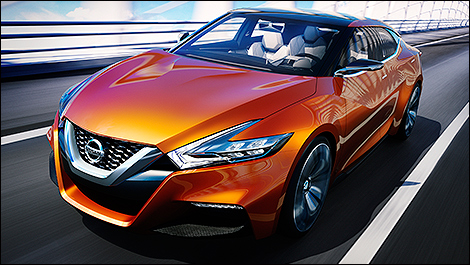From Chevrolet
Chevrolet unveiled the Corvette C7.R race car, which was co-developed with the all-new 2015 Corvette Z06.
 |
| Chevrolet Corvette C7.R (Photo: Chevrolet) |
Corvette Racing will field two C7.R race cars in 2014, starting later this month at the 52nd Rolex 24 At Daytona on Jan. 25-26. The C7.R will compete in the GT Le Mans class in 11 races around North America in the TUDOR United SportsCar Championship.
The team is also is expected to compete in June at the 24 Hours of Le Mans - a race Chevrolet and Corvette Racing have won seven times - in the GTE Pro class.
A key part of the team's success is the technology transfer between Corvette production cars and race cars.
Many of the architectural and aerodynamic features of the C7.R are based on equivalent components and technologies from the 2015 Corvette Z06.
 |
| Chevrolet Corvette C7.R (Photo: Chevrolet) |
As before, the race car and the Z06 will share the same, production-based aluminum frame. However, for the first time, the frames for the race car and production Z06 will be built in-house at the Corvette's Bowling Green, Ky., assembly plant.
By leveraging advanced manufacturing materials - such as laser welding, Flowdrill-machined fasteners and a GM-patented aluminum spot-welding process - the production structure is significantly stronger than its predecessor. For Corvette Racing, this equates to a race chassis for the C7.R that is 40 percent stronger than the outgoing C6.R.
The addition of direct fuel injection to the Corvette Z06 will enable the technology to return to a Corvette race car for the first time since the end of the GT1 era in 2009. It promises greater efficiency, which can make a significant difference in long-distance endurance racing such as Daytona and Le Mans through fewer time-consuming pit stops.
The aerodynamic strategies of the Corvette Stingray came directly from the Corvette C6.R - including the forward-tilted radiator, functional hood and front-quarter panel vents, and rear transmission and differential cooling intakes.
There are, of course, differences between the race car and production Corvette Z06. For example, the C7.R carries over the powertrain for the C6.R, as the GT rules limit the maximum displacement to 5.5L, and prohibit forced induction. By comparison, the new Z06 boasts a supercharged 6.2L engine estimated at 625 horsepower. Both engines, however, are based on the historic small block architecture.
The suspension on the C7.R is modified to accommodate wider racing tires and larger brakes, again part of the GT regulations.
On the aerodynamic side, one major difference is the shift away NACA ducts on the C7.R. The C6.R used two NACA ducts, on top of the rear bodywork and near the position of the rear wheels, for cooling. For the new C7.R, there are now openings on each of the rear quarter panels, above the brake ducts, which will draw air to help cool the race car's transaxle and differential.
Additionally, one of the primary results of the C7.R's aero detail is making the rear wing a more-significant part of the car's aero package. A larger radiator inlet has the added benefit of generating smoother airflow over the rear wing and making its use more efficient to the handling and stability of the race car at high speed.
 The latest auto news, reviews, prices, product and vehicle releases. Auto News 5
The latest auto news, reviews, prices, product and vehicle releases. Auto News 5



















